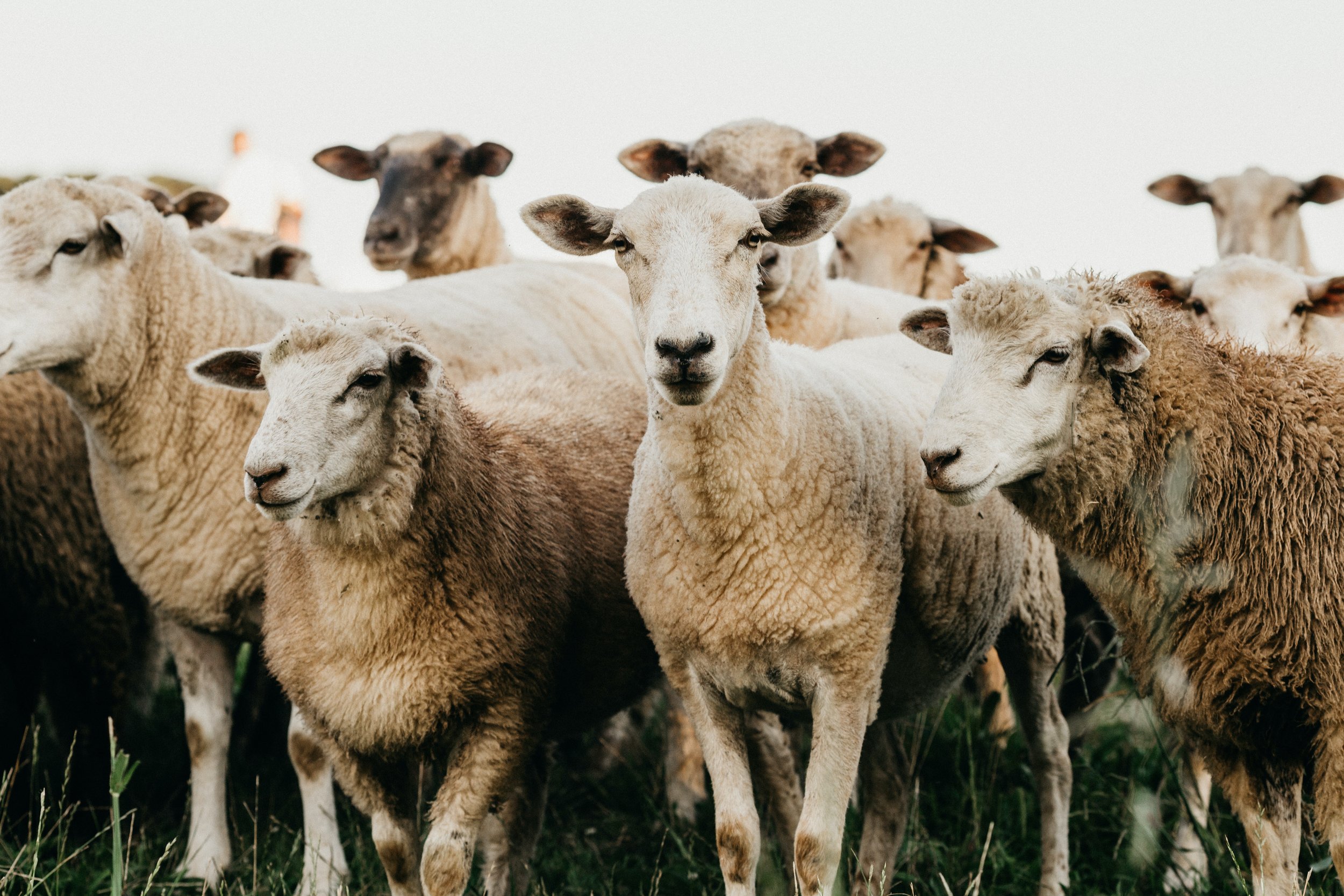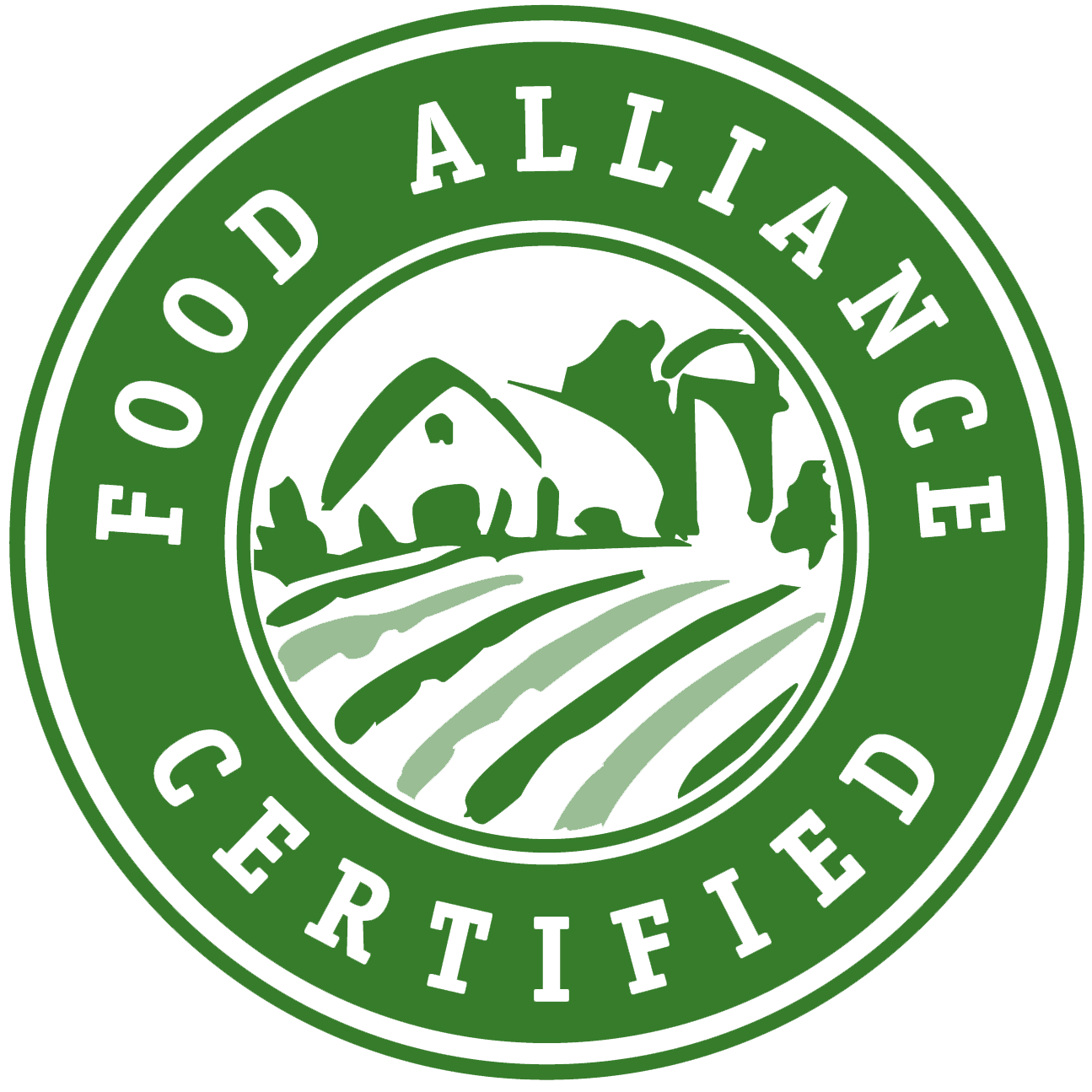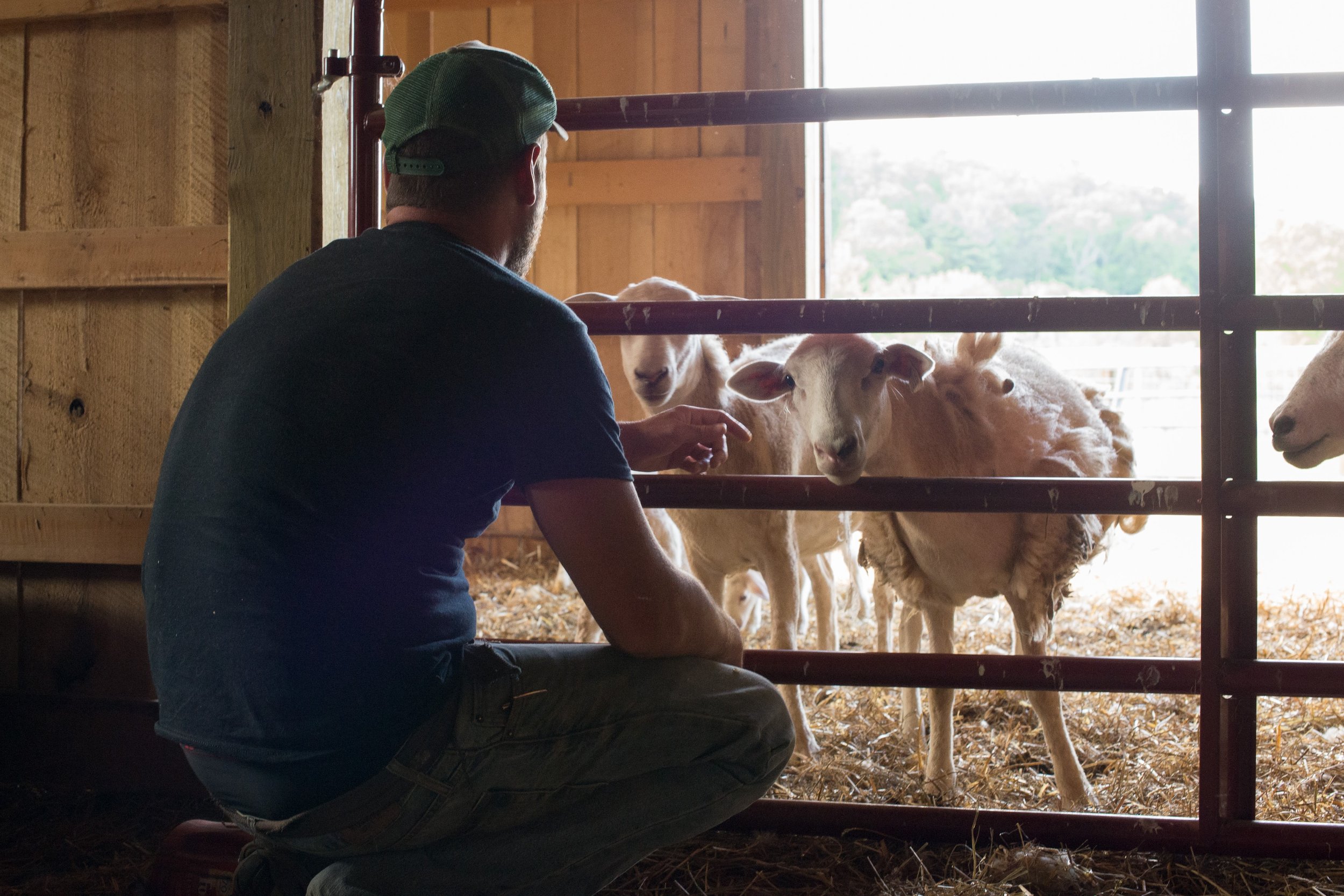Livestock Producers
This covers beef cattle and bison, sheep and goats, pigs, poultry and eggs, and dairy products.
An optional “grassfed” certification is also available for ruminants.
Getting Started
Food Alliance certification is a voluntary means for agricultural producers and food companies to address growing customer demand for traceability, transparency, and social and environmental responsibility. This page is specifically for livestock producers.
Learn more about our Grasslands Alliance here.
For producers interested in certification, they need to download and and review these three documents:
Food Alliance Sustainability Standard
Food Alliance Evaluation Tool
Food Alliance Policy and Procedures Manual
What is the Food Alliance Sustainability Standard?
The Food Alliance sustainability standard for livestock operations describes in general terms a vision and goals to improve management in the following areas of concern:
Healthy and humane animal treatment – with no use of growth promotants or sub-therapeutic antibiotics.
Integrated pest, disease and weed management.
Soil and water conservation.
Safe and fair working conditions.
Wildlife habitat and biodiversity conservation.
The standard applies to North American beef cattle, bison, sheep and goats (for meat), poultry production systems (including egg production), and cow dairies. An additional “grassfed” certification is also available for grassfed ruminant operations. At this time, the standard does not apply to sheep or goat dairies.
What is the Food Alliance Evaluation Tool?
The Food Alliance Evaluation Tools for Livestock Operations contain the criteria, indicators, and scoring rubric used by inspectors to assess sustainability practices and outcomes.
You can also use the tools for self-evaluation to review practices, estimate the scores you might receive during an inspection, and identify any potential compliance issue before applying for certification.
Please note that applicants for Food Alliance certification must meet both the standard evaluation criteria and the relevant livestock criteria.
Relevant Livestock Evaluation Tools
What is the Food Alliance Policy and Procedures Manual?
The Food Alliance Policy and Procedures Manual lays out rules that govern the certification program.
Certification Process
Application > Site Inspection > Inspection Report > Certification
Step 1: Application
The application for producers is arranged into separate modules to simplify completion. Once completed, the modules together should provide a comprehensive overview of your operation and your management practices – documenting your sustainability plan.
To ensure your application is complete and reduce delays, please:
Answer all of the questions.
Sign the application documents where required.
Provide any necessary supporting documentation.
Include payment for the application fee.
The application materials for Food Alliance Certified crops and livestock producers are arranged in separate modules which, taken together, comprise the Food Alliance Certified Producer Sustainability Plan.
All applicants should complete modules 1-12.
Additional modules are relevant to livestock producers, or unique crops such as cranberries.
Step 2: Site Inspection
Once your application is received and reviewed by Food Alliance, an inspector will contact you to schedule a site inspection. During the inspection, the inspector will tour your operation, interview managers and key staff, and review relevant records to evaluate performance using the Sustainability Standards and corresponding Evaluation Tool.
Step 3: Inspection Report
After the site visit, the inspector will submit an inspection report to Food Alliance.
Step 4: Certification Decision
Once the inspection report is received, the certification decision will be made. You will receive both a copy of the site report and a letter specifying the decision.
Grievance Policy: If you feel that the site inspector’s findings are unfair or inaccurate, you may submit a request for re-evaluation to Food Alliance. A request must be made in writing within 30 days of receiving the official site report, detailing the perceived inaccuracies of the site inspection. Applicants should also state whether or not they would like to be inspected by a different site inspector. Re-inspections of this nature will be provided to you at no cost. No further appeals will be accepted. However, you may reapply after you have made changes to your operation as suggested in the site report.
Step 5: Maintaining Certification
Term of the Certification
The term of certification for farmers and ranchers is three years. The term of certification for processors and distributors is one year. The official start date will be specified in the certification letter along with the products that may be labeled as Food Alliance certified.
Ongoing Compliance and Verification
This certification is designed to provide a basis for marketplace claims of environmental and social responsibility. In order to ensure the certification criteria are being met at all times:
Food Alliance reserves the right, at its own cost, to conduct unscheduled audits of participating farms, ranches, processors and distributors. Operations are either selected at random or based on specific concerns identified in the initial inspection.
Farmers and ranchers must also complete annual updates to maintain their certification, reporting any changes to their operation and progress towards their continual improvement goals.
Suspension and Revocation
If doubts are raised that an operation is not adhering to the certification standards, Food Alliance staff will investigate. If that investigation confirms the certification standards are not being met, that operation’s certification will be suspended. Food Alliance will provide the operation’s managers the reason(s) for suspension, specific steps for restoring certification, and a timeline for making the necessary changes. If the violation is remedied within the timeframe, certification will be restored. Otherwise, the certification will be revoked.
If you have any questions, or would like to receive these application forms in Word format by e-mail or a hard copy by mail, please contact our Certification Manager at (425) 466-7168 or certification@foodalliance.org.
Livestock Related Criteria
In very general terms, Food Alliance’s livestock-specific criteria focus on the health and productivity of both land and animals, broadly covering the following production practices.
Animal Nutrition and Animal Health: Each livestock standard has criteria addressing water and feed supply quantity and quality, and takes into consideration the age-specific needs of animals. Breeding and birthing success, weight gain, and freedom from illness are used to indicate the degree to which livestock nutritional needs are being met and overall animal health is being promoted.
Living Condition: Livestock living conditions are expected to be actively managed: outdoor shelter areas should be kept as clean and dry as possible, housing and fencing regularly checked for broken sections or sharp objects to prevent injury, and adequate space provided for livestock in confinement or fenced-in areas to freely move about. Higher scores are granted for operations providing free access to pasture (for all or suitable portions of the year).
Livestock Handling: Natural reaction to movements and animal social behavior should be well understood and of top consideration when handling livestock. Animal handlers should be well trained and focused on reducing stress during handling or transport activities.
Handling Facilities: Facilities should be designed to reduce stress and injury, should be well maintained and kept in good repair. Higher scores are granted when handling areas include design features to allow for the normal behaviors and reactions of livestock (for example, lighting designed to prevent shadows, uniform flooring to prevent balking, quiet fans, pumps, gate closures to prevent high pitched or alarming noises).
Feed Production and Pasture Management: Feed production and pasture management in livestock production includes the following scored criteria areas (as applicable): grazing plan, grazing riparian areas, plant litter and vegetative cover, pasture reproduction & health, fertilizer usage, weed management and herbicide usage, feeding/shelter/watering site management, over-winter confinement areas, and feed storage. In general, pastures or rangelands need to be given adequate periods of rest and re-growth, nutrient levels should be monitored and commercial or organic amendments applied when needed, congregation areas (near feeding/shelter/watering sites) kept adequately vegetated, and feed storage areas kept dry and free from contamination.
Manure Management: An adequate balance of livestock numbers and pasture/cropland areas needs to be achieved such that manure nutrients can be cycled through the available land base at agronomic rates. Manure odors should be minimal and any manure storage areas should meet local and state legal requirements, be located within acceptable distance from surface waters and away from areas with potential for flooding.
Animal Pest Management: This area includes criteria related to fly control, external and internal parasites, rodents, and predators. Cultural controls and management options that limit the need for insecticide use are promoted. Producers are expected to have an understanding of predators’ natural habits, habitats, territories, and food sources and adjust livestock management to an awareness of the food needs of predators.
On-Site Slaughter (N/A for animal processing off-site): Livestock handlers need to be able to articulate methods of testing for insensibility during on-farm slaughter. Additionally, the handler needs to be able to discuss guidelines for deciding when a casualty animal should be treated versus slaughtered.
Transportation: Loading densities are expected to be closely managed to prevent overloading and possible injury to livestock during transport; truck or trailer surfaces should be free of sharp, protruding features that could cause injury; temperature and weather are prime factors when planning transportation activities.
Livestock Certification FAQs
-
Once Food Alliance receives a complete application, the certification process generally takes 4 to 8 weeks. During this period, Food Alliance reviews the application materials, then assigns a site inspector who schedules and conducts the inspection. Once we receive the site inspector’s report, we make the certification decision and inform the applicant by mail. The process can take longer than 8 weeks if the application is incomplete and requires us to contact you for more information, or when we receive it in a season when weather or production cycles make it difficult or impossible to observe and evaluate management systems, practices and outcomes. If you have any questions, please contact us.
-
Food Alliance and its inspectors hold all documentation and information obtained during the certification process in strict confidence. Only Food Alliance certification program staff and site inspectors will have access to application records and documents. Food Alliance staff will not discuss applications or the details of an individual certification inspection with any individual or agency. Food Alliance site inspectors sign a binding confidentiality agreement.
-
There are two types of fees: Inspection fees and licensing fees. Inspection fees include a document processing charge and the actual cost of inspection. Licensing fees are based on gross sales of Food Alliance Certified products.
-
A payment of $800 is due with the application. This includes a non-refundable $400 document processing charge and a $400 deposit towards the actual cost of the inspection.
The processing charge covers review of applications, coordination of the inspection, review of inspection reports, and the recommendation for certification.
Inspection costs include inspector time and travel expenses, which may vary depending upon the location, number of facilities, number of production lines, etc. The balance for inspection costs is invoiced upon completion of the inspection and is payable in 30 days.
In most cases, the total for farm and ranch inspection fees averages between $750 and $1,200. Food Alliance certification is valid for 3 years, so you can think about the pro-rated cost for inspection fees being $250 to $400 per year.
On request, Food Alliance can provide an estimate for the cost of inspection before you submit your application for certification, based on your location and the size and complexity of the operation.
-
Licensing fees can vary depending on who is making and benefiting from the certification claim, and can apply differently to independent producers, producer groups, and contract producers.
Licensing fees are assessed annually as follows:
Independent producers pay a percentage of gross sales of certified products for licensing, as follows:
Gross Sales Licensing Percentage
First $150,000 0.4% or $200 minimum
Next $150,000 0.2%
Additional Sales 0.1%
-
Licensing fees can vary depending on who is making and benefiting from the certification claim, and can apply differently to independent producers, producer groups, and contract producers.
Licensing fees are assessed annually as follows:
Members of cooperatives and producer groups who jointly market products pay licensing fees using the same fee schedule as independent farms and ranches (above). However, these groups aggregate all sales when calculating licensing fees.
In order for a cooperative or joint marketing group to be certified:
The group must submit an estimate of annual gross sales of products to be certified.
The group must identify all of the farm and ranch members who will be providing certified products for sale.
Food Alliance must receive completed certification applications and the above fee for each of the appropriate members.
Contract Producers
Producers growing for contracts which require Food Alliance certification pay the inspection fees described above, but their licensing fee is based only on the value of goods sold under that contract (not gross sales of the product(s)).
Contract producers must meet all Food Alliance criteria for the product in question, but are not allowed to label products or assert Food Alliance certification claims about products outside of the specifying contract.
Either the contracting business or the contracted producer is responsible for paying annual licensing fees on the value of certified product sold under contract. The responsible party must be identified at the time of application.
If the contracting business is a Food Alliance Certified packer, processor, manufacturer or distributor that has agreed to pay the licensing fee on behalf of suppliers, please refer to the Food Alliance Certified Handler Program for further information.
-
Food Alliance uses qualified private contractors to perform on-site inspections for the certification program. We train inspectors in the use of our own detailed evaluation documents and inspection procedures. These are designed to verify on-farm practices and help inspectors make fully informed decisions regarding the approval or denial of an application. Qualifications for site inspectors include working expertise, educational background, and significant knowledge of sustainable/conservation agriculture management for specific production systems. Inspectors often also work as IPM or crop consultants, production managers for food processors, or scientists for research institutions. In some cases, site inspectors may be retired from university extension, NRCS or another agency.
-
Yes. We ask that all farm and ranch decision makers be present at the time of the site inspection. In addition, we recommend the following to prepare for a site visit:
Make sure that you have ample time for the inspection. It is important that both managers and personnel responsible for record keeping be present. Site inspections typically take from 2-6, depending on the number of crops evaluated.
Have records ready to show the site inspector. This includes pesticide records, scouting records, records of irrigation activities, harvest records, and reports of all inputs.
Be prepared to describe your strategies as they relate to Food Alliance’s Guiding Principles, with special emphasis on pest management, soil and water conservation, human resource management, and wildlife habitat/natural areas management.
Be prepared to walk or drive around your property to show pesticide storage sheds, on-site housing, machinery, significant vantage points, riparian areas and other aspects of your operation relevant to the Guiding Principles.
-
Food Alliance often contracts with independent consultants to create standards. The concepts and practices found in the standards generally come from “best management practices” identified through research at public agencies and land grant universities. In addition to consultants, Food Alliance staff are advised in the standards development process by our Stewardship Council, a volunteer group of farmers, ranchers and other representatives of the food industry university and agency researchers, and advocates for farm labor, animal welfare, the environment and consumer affairs.
-
If a farm or ranch fails the certification inspection, Food Alliance provides a detailed report describing changes needed to meet the certification criteria. Applicants then have up to one year to make required changes and request a follow-up inspection at no additional cost. When the changes have been made, the applicant can contact Food Alliance to schedule another inspection. In some cases, compliance can be verified without the need for a follow up inspection.




